Florence, the capital of Tuscany crossed by the Arno River, has approximately 375,000 inhabitants. Alongside Rome and Venice, it ranks among Italy’s major art cities and attracts nearly ten million visitors each year.
As the cradle of the Renaissance, the city has preserved an exceptional heritage where the artistic, architectural, and intellectual momentum that emerged in the 14th century is expressed in its churches, palaces, and prestigious museums.
Strolling through the historic center is a delight: every street, every square bears witness to past grandeur while keeping Florentine craftsmanship and commerce vibrant.
Beyond that, Florence also charms with its human-scale atmosphere, bustling markets, trattorias where one savors Tuscan cuisine, and refined craftsmanship, from leather to the jewelry workshops of the Ponte Vecchio.
From the surrounding hills, from Piazzale Michelangelo to Fiesole, the view encompasses unique panoramas of the city and the surrounding countryside.
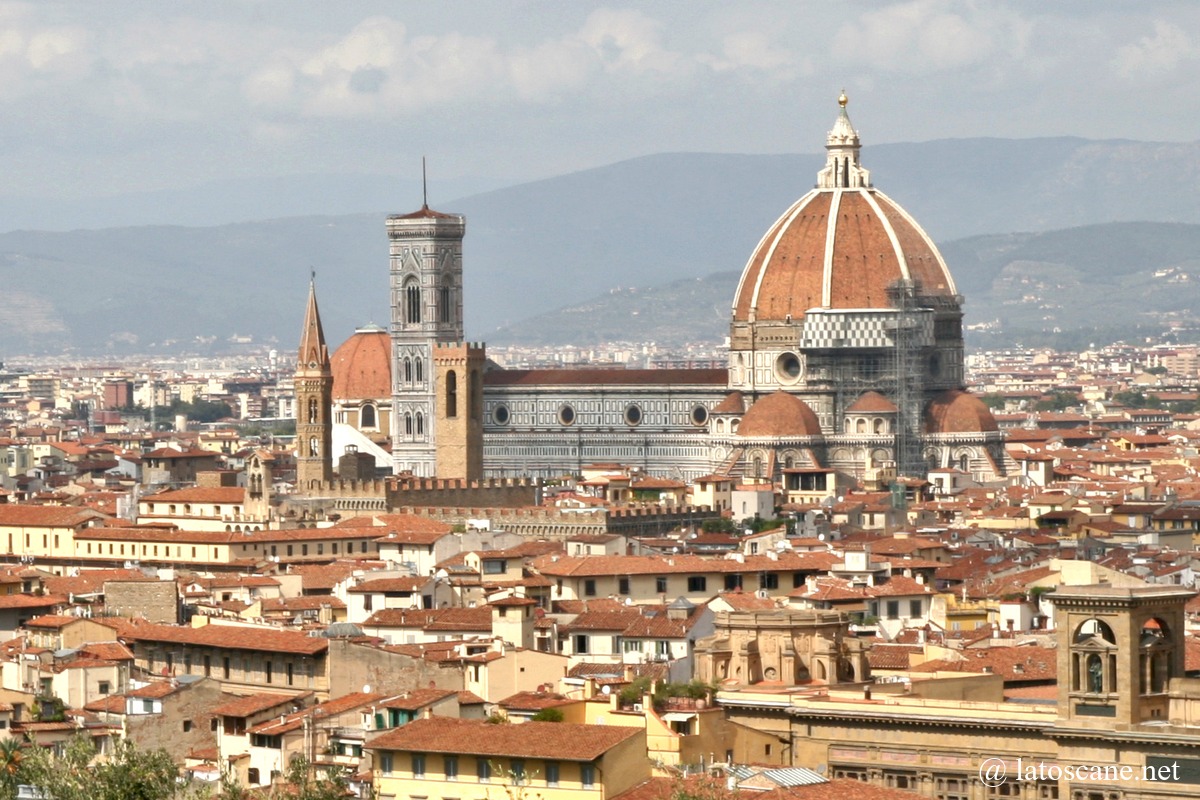
Good Reasons to Visit Florence
- Experience the atmosphere of a human-scale city, where everything can be explored on foot within a lively and vibrant historic center.
- Explore the cradle of the Renaissance with its masterpieces, as well as its lesser-known neighborhoods, more authentic and full of charm.
- Be captivated by local craftsmanship: leather workshops, jewelers on the Ponte Vecchio, stationery shops, and traditional stores.
- Taste Tuscan cuisine, from the famous “bistecca alla fiorentina” to Chianti wines, in trattorias and typical markets like San Lorenzo.
- Admire unforgettable views of the city and surrounding hills, especially from Piazzale Michelangelo or Fiesole.
- Share in Florence’s lively culture, with its festivals, temporary exhibitions, and concerts in historic settings.
The Most Beautiful Works in Florence
The heart of Florence is discovered at Piazza del Duomo, dominated by the Cathedral of Santa Maria del Fiore. Its polychrome marble façade, the bell tower designed by Giotto, and Brunelleschi‘s dome make it a unique ensemble. Access is also available to the Baptistery of San Giovanni, famous for its bronze doors.
Nearby, the Ponte Vecchio with its goldsmith shops elegantly spans the Arno River. It is one of the city’s most picturesque and romantic locations.
On Piazza della Signoria, the Palazzo Vecchio, former seat of civic power, stands alongside the prestigious Uffizi Gallery, one of the most famous museums in the world, attracting nearly 4 million visitors annually with masterpieces by Raphael, Michelangelo, Botticelli, and Leonardo da Vinci.
The city also houses magnificent churches, such as the Santa Croce Basilica, rich in funerary monuments, or Santa Maria Novella, with remarkable frescoes.
Other must-see museums include the Palatine Gallery at the Palazzo Pitti, the Bargello Museum, and the Archaeological Museum. The Vasari Corridor, connecting Palazzo Vecchio to Palazzo Pitti, a testament to the Medici’s grandeur, completes this ensemble, along with the Medici Chapels and the Boboli Gardens.
Beyond the major monuments, the historic center charms with its lively streets, artisans, cafés, and restaurants, where one can enjoy Tuscan culinary specialties.
Map, Where Florence Is Located
If you see this after your page is loaded completely, leafletJS files are missing.
Ticket Reservations, Tours, and Passes
Articles about Florence
- What to see in Florence: monuments, squares and museums
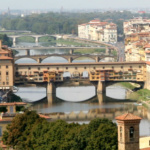 To explore Florence, at least 3 days are needed. The historic center, relatively compact, can ...
To explore Florence, at least 3 days are needed. The historic center, relatively compact, can ... - Interactive map of Florence
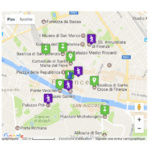 Map of Florence with its major monuments, places and museums Articles about Florence
Map of Florence with its major monuments, places and museums Articles about Florence - Hotels in Florence
 Hotels in Florence
Hotels in Florence - Visit Florence in 2 or 3 days
 A three-day stay in Florence allows you to discover the main Renaissance masterpieces and the ...
A three-day stay in Florence allows you to discover the main Renaissance masterpieces and the ... - Tickets and tours in Florence
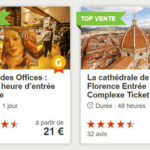 Florence touristic pass and combined tickets Excursions, visites guidées et billets à Florence Into the same category
Florence touristic pass and combined tickets Excursions, visites guidées et billets à Florence Into the same category - 16 Tuscan foods to try
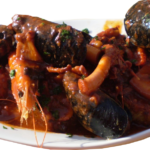 The Tuscan cuisine, particularly Florentine, is a celebration of simplicity and high-quality ingredients. Rooted in ...
The Tuscan cuisine, particularly Florentine, is a celebration of simplicity and high-quality ingredients. Rooted in ... - Florence Cathedral
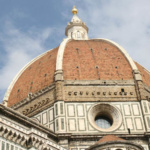 The Cattedrale di Santa Maria del Fiore, symbol of Florence, displays impressive dimensions, with its ...
The Cattedrale di Santa Maria del Fiore, symbol of Florence, displays impressive dimensions, with its ... - Palazzo Vecchio of Florence and museum
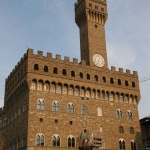 The Palazzo Vecchio (lit. “Old Palace”), one of the most iconic buildings in Florence, stands ...
The Palazzo Vecchio (lit. “Old Palace”), one of the most iconic buildings in Florence, stands ... - Ponte Vecchio
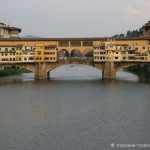 The Ponte Vecchio (lit. “the Old Bridge”) is one of the most famous and picturesque ...
The Ponte Vecchio (lit. “the Old Bridge”) is one of the most famous and picturesque ... - Piazza della Signoria
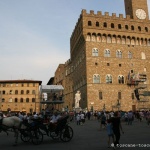 Piazza della Signoria is the political and historical heart of Florence. Located just a few ...
Piazza della Signoria is the political and historical heart of Florence. Located just a few ... - Churches in Florence
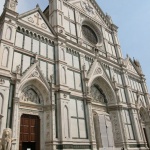 Florence, the cradle of the Renaissance where architecture, art, and history meet at every corner, ...
Florence, the cradle of the Renaissance where architecture, art, and history meet at every corner, ... - Museums in Florence
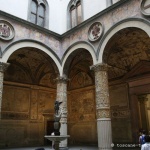 Florence, cradle of the Renaissance, is a true capital of art and culture in Italy. ...
Florence, cradle of the Renaissance, is a true capital of art and culture in Italy. ... - Uffizi Gallery
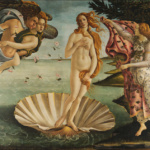 La Uffizi Gallery in Florence is one of the most famous museums in the world, ...
La Uffizi Gallery in Florence is one of the most famous museums in the world, ... - Santa Croce Basilica in Florence
 The Basilica of Santa Croce, built beginning in 1294, is the largest Franciscan church in ...
The Basilica of Santa Croce, built beginning in 1294, is the largest Franciscan church in ... - Santa Maria Novella Basilica in Florence
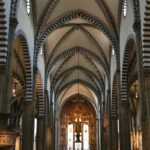 Santa Maria Novella is the large Dominican church located at the entrance to the historic ...
Santa Maria Novella is the large Dominican church located at the entrance to the historic ... - Palazzo Pitti, its museums and the gardens of Boboli
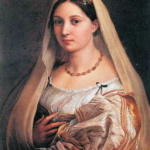 Palazzo Pitti is one of the largest buildings in Florence and a masterpiece of Renaissance ...
Palazzo Pitti is one of the largest buildings in Florence and a masterpiece of Renaissance ... - Gallery of the Academy of Florence
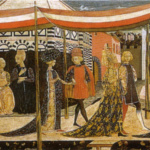 The Gallery of the Academy (Galleria dell’Accademia in Italian) is one of the most visited ...
The Gallery of the Academy (Galleria dell’Accademia in Italian) is one of the most visited ... - Typical cuisine of FlorenceThe Tuscan cuisine is based on simple, high-quality ingredients, reflecting a strong rural identity and ...
Historical Aspects
In the Middle Ages, Florence established itself as one of the major cultural, commercial, and financial centers in Europe. Its prosperity was based on the textile industry, particularly wool, and an innovative banking system that made the city a key player in international trade. This economic power directly contributed to its artistic and political influence.
Florence’s political destiny was closely linked to the powerful Medici family, who ruled the city at various times: from 1434 to 1494, then from 1512 to 1527, and finally from 1530 to 1737. The Medici were bankers, patrons, and rulers, supporting artists and scholars such as Brunelleschi, Donatello, Michelangelo, Botticelli, and Galileo. Their patronage made Florence one of the most active centers of the Renaissance.
The city also experienced profound religious and political tensions. The late 15th century saw the rise of Girolamo Savonarola, a Dominican friar who preached against corruption and organized the famous “Bonfires of the Vanities” before being executed in 1498 at Piazza della Signoria. These events reflect the vitality and divisions of Florentine civic life.
Florence was incorporated into the Duchy of Tuscany, established in 1530 and entrusted to the Medici. After the dynasty’s extinction in 1737, Tuscany came under the rule of the Lorraine family.
In the 19th century, Florence played a notable role in the Italian unification movement. After Tuscany’s annexation to the Kingdom of Sardinia, the city became the capital of the Kingdom of Italy from 1865 to 1871, before this status was transferred to Rome.
-> Read more on the History of Florence page


No Comments Yet